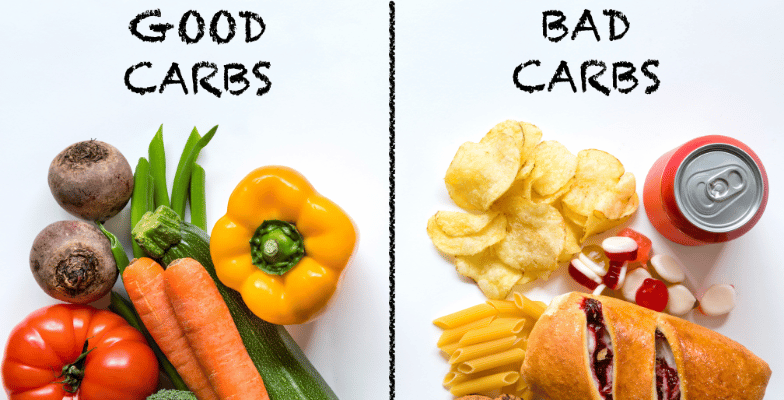Carbohydrates stand as a cornerstone of our daily diets, fueling our bodies and minds with essential energy. However, not all carbs are created equal. The dichotomy between “good” and “bad” carbs has emerged as a crucial factor in nutrition discussions, guiding individuals toward making informed dietary choices. This comprehensive guide embarks on a journey to explore the nuanced differences between good and bad carbs, shedding light on their effects on well-being, and empowering us to navigate the complex carbohydrate landscape.
The Multifaceted World of Carbohydrates
Carbohydrates comprise a diverse group of organic compounds containing carbon, hydrogen, and oxygen. They fall into three categories: sugars, starches, and fibers. The classification of carbs as good or bad hinges on factors like their chemical structure, nutrient content, and impact on blood sugar levels.
Good Carbs: The Nutrient Powerhouses
Good carbs, often termed complex carbs, are abundant in whole, unprocessed foods. They boast rich nutrient profiles, particularly fiber, which aids in digestion and maintains stable blood sugar levels.
Bad Carbs: The Deceptive Sugars and Refined Grains
In contrast, bad carbs encompass simple sugars and refined grains found in sugary snacks, pastries, and processed foods. They lack the fiber and vital nutrients present in their complex counterparts and can trigger rapid blood sugar spikes.
Health Implications: Good vs Bad Carbs
Beyond energy supply, carb quality significantly impacts overall health, weight management, and the risk of chronic diseases.
Good Carbs: Promoting Wellness
- Sustained Energy Release: Complex carbs offer gradual energy release, preventing energy crashes and supporting consistent activity levels.
- Digestive Harmony: Their high fiber content aids digestion, promoting regular bowel movements and preventing constipation.
- Weight Management: Fiber-rich foods enhance satiety, aiding in appetite control and facilitating weight management.
Bad Carbs: A Detriment to Well-Being
- Blood Sugar Roller Coaster: Consumption of bad carbs leads to blood sugar spikes followed by crashes, contributing to insulin resistance and type 2 diabetes.
- Weight Gain: Lacking in satiety, bad carbs encourage overconsumption, leading to obesity and weight gain.
- Chronic Disease Risk: A diet rich in bad carbs correlates with increased heart disease, metabolic syndrome, and inflammation risk.
Strategies for Informed Choices
Understanding carb intricacies empowers us to make mindful dietary decisions that promote well-being.
- Whole Grain Wisdom: Opt for nutrient-dense whole grains like quinoa, brown rice, and whole wheat bread.
- Embrace Fiber-Rich Foods: Prioritize fruits, vegetables, legumes, and whole grains for enhanced digestive health and sustained energy.
- Mindful Sugar Consumption: Vigilantly watch for added sugars, selecting lower-sugar products and savoring natural sweetness from fruits.
- Portion Control: Exercise moderation with bad carb-rich foods to maintain a balanced diet and support overall health.
Conclusion
The distinction between good and bad carbs transcends mere labels, paving a path to better health and vitality. Armed with insights into how these carb categories impact our bodies, we can craft dietary choices aligned with our wellness aspirations. Achieving equilibrium by favoring good carbs while minimizing bad carbs guides us toward a healthier, more energized life. Through the power of informed dietary decisions, we seize the opportunity to nurture our bodies and minds for enduring well-being.
